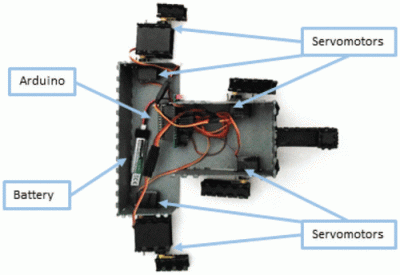
MIT engineers have developed a technique to address the challenges involved in manufacturing robots at a cheap and accessible level. Like a plant folding out its petals, a protein folding into shape, or an insect unveiling its wings, this autonomous origami design demonstrated the ability for a mechanical creature to assemble itself and walk away. The technique opens up the possibility of unleashing swarms of flat robots into hard to reach places. Once on site, the robots mobilize from the ground up.
The team behind the project used flexible print circuit boards made out of paper and polystyrene, which is a synthetic aromatic polymer typically found in the commercially sold children’s toy Shrinky Dinks™. Each hinge had embedded circuits that were mechanically programmed to fold at certain angles. Heat was applied to the composite structure triggering the folding process. After about four minutes, the hinges would cool allowing the polystyrene to harden. Some issues did arise though during the initial design phase due to the amount of electrical current running the robots, which was ten times that of a regular light bulb. This caused the original prototypes to burn up before the construction operation was completed.
In the long-term, Core Faculty Member [Robert] would like to have a facility that would provide everyday robotic assistance to anyone in the surrounding community. This place would be accessible to everyone in the neighborhood helping to solve whatever problems might arise, which sounds awfully like a hackerspace to us. Whether the person required a device to detect gas leaks or a porch sweeping robot, the facility would be there to aid the members living nearby.
A video of [Robert] and [Sam] describing the project comes up after the break:
Continue reading “Self-Assembling Origami Robots” →
















